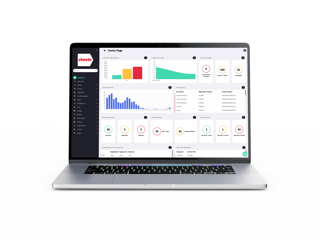If workers are using their own vehicles for business then you can either incentivise more sustainable vehicle choices, or ban the use of vehicles which do not meet your criteria from business mileage claims.
Teesside-based housing association North Star Housing reviewed its green fleet policy four years ago and found its initiatives to encourage lower-emissions cars and disincentivise mileage so successful it cut its carbon footprint by 26% in the first year alone.
Cash allowance takers who chose cars emitting less than 150g/km received more than twice the lump sum given to employees who chose a car over 185g/km, and much cheaper loans.
They also receive HMRC’s fuel-indexed allowance with a base rate of 15p.
North Star has considered increasing its incentives to push emission levels below 120g/km and looked at introducing pool cars.
Employees that use their own car for business, meanwhile, have seen their reimbursement rate reduced to 40p per mile – 5p per mile below the Government’s AMAP rate.
Disincentivising motoring by cutting mileage allowances is one of the keys ways fleets can minimise emissions but also reduce costs and mitigate road risk.
Commercial Group pays AMAP rates, but this drops after a certain mileage threshold to make driving their own vehicle less attractive to employees.
Commercial also encourages casual users to use pool cars and has upgraded these to low-emission BMW 320 and Audi A4 and A3 to boost enthusiasm among staff.
“Offering good vehicles encourages workers out of their own cars which gives us better control of roadworthiness, emissions and so on,” says Rob Paddock, distribution and logistics manager.
Centrica gives advice to its grey fleet drivers on car selection in its handbook, pointing to benefits of fuel efficient cars.
Group fleet manager Colin Marriott says the company offers a cash allowance to those who wish to opt out of the company car scheme but it doesn’t offer specific incentives based on low-emission selection.
“We do make available very good quotes on electric cars, however,” he adds.
The most common fleet policy seems to be to minimise the size and mileage of the grey fleet altogether.
ISS tries to make it as onerous as possible for staff to drive their own car as it looks to reduce or eliminate the grey fleet.
Staff must apply for a driving permit, which requires them to agree to annual checks for MOT, business insurance, driving licence and servicing, before they can use their own car for business.
The company will not allow any employee to drive their own car if it is over seven years old. It also caps business mileage at 10,000 a year.
However, it does not specify what cars employees can buy. “ is a step too far. Quite often the reason people come off the company car list is because they do not want the smaller-engined, low-emission cars we offer,” says group fleet manager Nigel Rowden.
“However, we restrict cash allowances to management and only pay the HMRC advisory rate for fuel costs so we aren’t incentivising mileage.”
Cutting business mileage is essential to Centrica’s carbon footprint and its risk management policy.
“We believe there is a linear relationship between the number of miles travelled and the number of accidents, so if we can cut business mileage by 10% that suggests our collision rate will fall proportionately,” Marriott says.
Centrica has set its environmental target at reducing its carbon footprint by 24% between 2007 and 2014.





















Login to comment
Comments
No comments have been made yet.